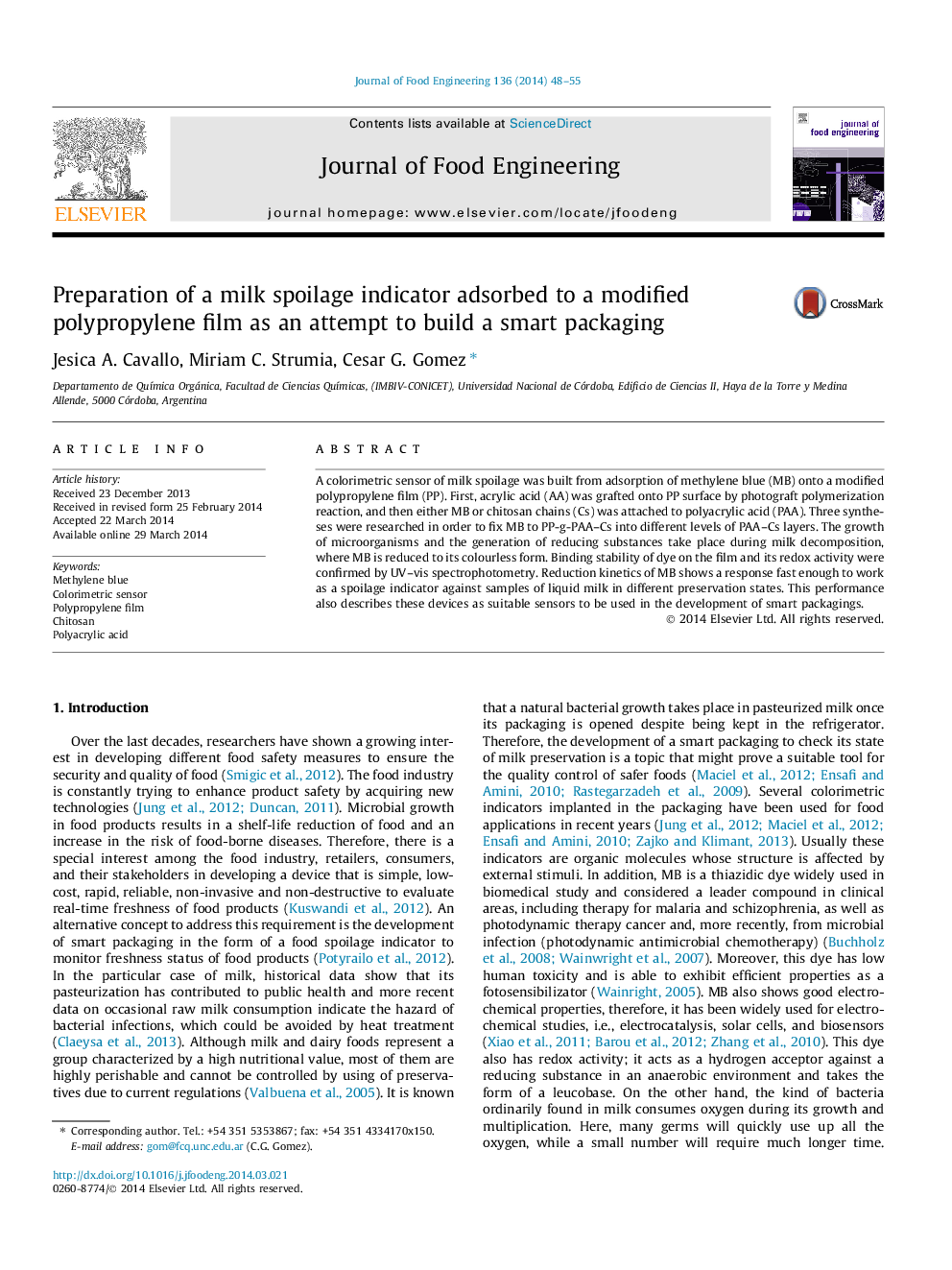| Article ID | Journal | Published Year | Pages | File Type |
|---|---|---|---|---|
| 223136 | Journal of Food Engineering | 2014 | 8 Pages |
•A milk spoilage sensor was built by adsorption of methylene blue onto a polymer film.•Binding capacity of chitosan helped to keep the dye attached to the film surface.•Dye reduction kinetics shows a response fast enough to work as a suitable indicator.•Dye reduction kinetics indirectly checks the microorganism population in milk.•This colorimetric device exhibits suitable properties to build a smart packaging.
A colorimetric sensor of milk spoilage was built from adsorption of methylene blue (MB) onto a modified polypropylene film (PP). First, acrylic acid (AA) was grafted onto PP surface by photograft polymerization reaction, and then either MB or chitosan chains (Cs) was attached to polyacrylic acid (PAA). Three syntheses were researched in order to fix MB to PP-g-PAA–Cs into different levels of PAA–Cs layers. The growth of microorganisms and the generation of reducing substances take place during milk decomposition, where MB is reduced to its colourless form. Binding stability of dye on the film and its redox activity were confirmed by UV–vis spectrophotometry. Reduction kinetics of MB shows a response fast enough to work as a spoilage indicator against samples of liquid milk in different preservation states. This performance also describes these devices as suitable sensors to be used in the development of smart packagings.
Graphical abstractFigure optionsDownload full-size imageDownload as PowerPoint slide
